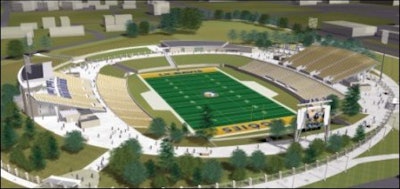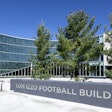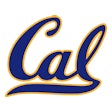Animation technology not only plays a major role in designing athletic and recreation facilities, it's also critical in marketing them before they even exist

The University of California, Davis, needs your money - anybody's money, really. In the midst of a jump from Division II to Division I-A (Division I-AA for football) and with ground slated to break on a new $27 million football and lacrosse stadium by early 2005, administration officials are in search of everyone from donors to sponsors.
But rather than woo individuals, organizations and corporations with static artists' renderings of the stadium and its numerous amenities, the university's design team and its architecture firm created a five-minute video that takes viewers on an animated, three-dimensional virtual tour through all three phases of the stadium's development - beginning with a 10,000- to 12,000-seat configuration all the way up to the eventual proposed 30,000-seat environment. The fly-through nature of the tour provides full visual access to signage opportunities, VIP seating possibilities and aerial views.
While student fees are paying a majority of the stadium's price tag, administrators hope that the animated video will help raise about $8 million to cover the project's remaining costs.
"Everything in our program is changing right now, and part of moving to Division I is upgrading facilities," says Mike Robles, the university's assistant athletic director for media relations. "What the video does is show the future of our program. People can see where we're at now, but they also want to see where we're going. The video is helping to build excitement."
Excitement surrounding what is referred to in architects' circles as visualization software has been building in the industry since at least the late 1980s. Back then, most moving footage was crudely created on large mainframe computers and featured grainy images and questionable color quality. By the mid-'90s, however, as Microsoft ® Windows operating systems improved, production quality was dramatically enhanced. Today, the technology to create basic animation is widely available for a base cost of about $10,000.
"Now it's to the point where you can almost fool people into believing it's real," says Jon Niemuth, a senior project designer for Kansas City, Mo.-based architecture firm Ellerbe Becket. "But it took awhile to get a tree to look like a real tree and a brick to look like a real brick."
With such realistic elements as shadows cast by fitness equipment, retractable bleachers that extend on their own, shiny tabletops that reflect sunlight and building exteriors that ripple with texture, virtual tours emulate the imagery found in video games and such popular animated movies as "Finding Nemo" and "Shrek" - although they aren't always populated with spectators or participants.
Like most designers of athletic and recreation facilities, Ellerbe Becket provides visualization software to some degree on practically every project. Some firms have in-house visualization teams that specialize in animation, while others outsource the work. Either way, the early phases of visualization are already built into the computer-assisted design process architects follow, so it's not unusual for initial meetings between architects and clients to include a brief digital presentation, with the option of expanding that aspect of the project at the client's request. "It usurps traditional sketches and clay models," Niemuth says. "It's something we have to do anyway."
Clients who wish to expand the visualization treatment of their project should expect to pay at least $10,000 to $15,000 for basic services (compared to upwards of $50,000 a decade ago). In return, they receive a video that typically runs two to five minutes in length and can be updated periodically throughout a project to reflect major change orders or new design elements. The videos can be formatted on CDs, DVDs and VHS tapes - although clients often download the video to the hard drive on their laptop computers for impromptu viewing via any multimedia player.
Add thought-provoking and appealing narration, photographs that inspire feelings of nostalgia and familiarity, and appropriate royalty-free music (selecting copyrighted material for a video's soundtrack is a major legal no-no these days), and "all of a sudden, that piece takes on a life of its own," Niemuth says. "It needs to be emotional and evocative."
"For anything that doesn't physically exist now, animation is the most effective way to help people envision not what that thing could look like, but what it will look like," says Kris Kindelsperger, president of the Franklin, Ind.-based consulting firm Johnson, Grossnickle and Associates Inc., which recommends virtual tours to many of its clients seeking funding for capital projects.
While such large schools as the University of Missouri and the Georgia Institute of Technology have used visualization software to promote new facilities, smaller institutions such as Carthage, Wabash and Defiance Colleges, elementary and secondary institutions like Charlotte, N.C.'s Providence Day School and municipal facilities like the Tyson Event Center in Sioux City, Iowa, have also taken advantage of the technology to varying degrees.
For example, the $31 million Tyson Center, a multipurpose facility that opened in December 2003 and currently serves as home to a minor league hockey team, an arena football team and several college and high school championships, used only still 3-D images of such core components as concourses and suites to better convey the possibilities to potential sponsors and ticket buyers.
Carthage College officials, meanwhile, showed their animated video featuring a virtual tour of the 156,000-square-foot Tarble Athletic and Recreation Center (which opened on the Kenosha, Wis., campus in 2001), to all prospective donors and students. "The video helped, but to what extent it helped, I have no idea," athletic director Robert Bonn says.
As Bonn suggests, determining just how effective visualization software can be for a fund-raising project borders on the impossible - unless donors specifically cite the animation as a motivating factor in their giving decision. But proponents of this form of marketing say it's worth the effort, regardless of the payback amount.
"If this piece gets a donor who's going to give us $5 million, it's definitely cost-effective," Scott Stevenson, creative communications director for the UC Davis athletic department, says about the virtual stadium tour. "But even if we don't, I still think it's cost-effective, because seeing is believing for these people."
"I don't know if I can point to a particular gift and say it was the video," says Kate Troelstra, assistant headmaster for development for Providence Day School, which used an animated video to help drum up donations during a $15.5 million fund-raising campaign that resulted in a new library and the 54,000-square-foot Mosack Athletic Center, which opened in 2001. "But what the video did was really help people visualize what the buildings were going to look like. You can talk and wave your hands above an architect's drawings, but they're really just lines on a piece of paper. A virtual tour puts people right inside that building, so they can imagine themselves walking through the facility and their students playing basketball on that court. That helped us have a successful campaign."
Other keys to successful campaigns involve presenting the virtual tours in strategic ways. When UC Davis officials began showing the stadium video to prospective individual and group donors, they let it play all the way through before taking time to add their own comments and answer questions from their audience, Stevenson says. Now, the main presenter (often athletic director Greg Warzecka, assistant athletic director for development Mike Angius or head football coach Bob Biggs) uses a laser pointer and a remote to control the video, pausing it in mid-tour to clarify a point or answer a question. That method may halt the video's flow, but Stevenson says it is effective in helping viewers better understand the project's overall scope and impact.
Stevenson also personalizes each video presentation, customizing it for its intended audience. For example, the original video arrived from the architect's office with a soundtrack featuring a combination of rock, jazz and techno music, which Stevenson says caused some viewers trouble in finding a clear connection between the images they were seeing and the sounds they were hearing. As a result, sometimes the video is shown without music. He also adds still photography to the beginning or end of the video when appropriate, and he always personalizes each video presentation with the name of the individual or organization viewing it. "But I don't mess with the animation, because I don't want to affect the integrity of the piece," Stevenson says.
The animation element has been updated numerous times to reflect changes in the project since Stevenson and his team began showing it to viewers last year. Stevenson says he expects his library of copies to increase substantially before the initial phase of the stadium is completed in 2006; by this June, he already had five different master versions.
Change orders (and master copies of the video) were kept to a minimum for Providence Day School's athletic center project, Troelstra says, thanks in large part to a detailed planning process that got the athletic director, coaches and physical education teachers involved in the animation process. They shared with architects such practical information as the natural flow of players from the locker room to the basketball court and of spectators from the concessions stands to the bleachers, as well as suggested locations for the campus store within the facility. That strategy resulted in few change orders because all parties involved agreed on the final design in the project's early stages and seldom veered from that design. "Honestly, I don't know that I would do a virtual tour without all the prep work," Troelstra says. "Our relationship we have with our donors is so important - it not only involves accountability, but also trust."
To bolster that donor trust, Providence Day School officials created a post-construction video that combined footage from the virtual tour with actual footage. In the animated video, for example, doors to the athletic facility automatically swing open, while in the follow-up video the animation morphs into the real world, showing children actually pulling open the doors and inviting viewers inside. The soundtrack of music and narration is augmented by voiceovers from students commenting on the new facilities and amenities.
"For those parents and donors who hadn't yet had a chance to get into the facility, they could see that the reality was indeed very close to what we had shown them a few years earlier, which from an accountability standpoint is great," Troelstra says. "I think that will only help us going into our next campaign because people can say, 'Well, when they built the library and the athletic center, they really did what they said they were going to do.' "
Visualization software revolutionized the facility-design industry more than 15 years ago, and now it's doing the same thing to the facility-marketing business - and the trend toward more advanced technologies doesn't appear to be slowing down.
Club Resource Group in Livermore, Calif., for example, offers 3-D modeling and animated fly-throughs to health club operators looking to recruit members prior to the completion of a new fitness facility. And at least one company currently works with architects of professional and collegiate sports venues to provide visualizations of computer-generated, 3-D seating-bowl models, giving ticket buyers an accurate view from every seat in the house.
Late last year, season-ticket holders for the NBA's Memphis Grizzlies used such a service created by Alameda, Calif.-based Ballena Technologies Inc. to select their seats for the team's upcoming first season in the new FedExForum. A total of 219 camera locations provide the animated 180-degree views, which can be accessed online by clicking on any area of the seating bowl.
Ticketmaster, the world's largest ticketing company, unsuccessfully tried to implement a similar concept back in 1999, allowing ticket buyers access to 360-degree photographic images and 3-D virtual-reality graphics representing more than 75 venues across the United States. Some observers say the reason that service failed for entertainment events such as concerts and special performances but is becoming increasingly popular for sporting events is because spectators may boast a greater emotional attachment to their favorite sports teams than to their favorite rock stars. There's also the season ticket element, which means fans will be taking in their chosen view of the action many times a year, not just once.
As of June, only eight NBA teams, three NHL teams, two NFL teams and two Major League Baseball teams employed Ballena's services. But more teams and venues may be moving toward similar options.
Likewise, as visualization software becomes more prevalent, an increasing number of facility operators may show interest in reaping the benefits of virtual tours. And you'll be hard-pressed to find detractors among those who've already taken advantage of the technology. "I think if we proceed with a wrestling practice facility or something else that we would need to raise funds for, animation technology will continue to be an avenue for us," UC Davis' Robles says.
"I would hate to go back to just using paper," adds Providence Day School's Troelstra, who's considering using visualization software - albeit to a lesser extent than for the library and athletic center projects - to help solicit donations for expansions to a dining hall and a performing arts center. "But virtual tours are not cheap. I can justify the cost on a $15.5 million campaign a lot easier than I can on a $2.35 million campaign. Still, our donors are approached by countless other educational institutions and charities. If a donor only has so many dollars that he or she gives away every year, you want to make sure that you're using every tool that you can in order to maximize your chances for getting those dollars. As the technology gets more advanced and easier to manipulate, I almost feel like virtual tours are going to become an expectation - something that you're going to have to do, not something that would be nice to do."
































